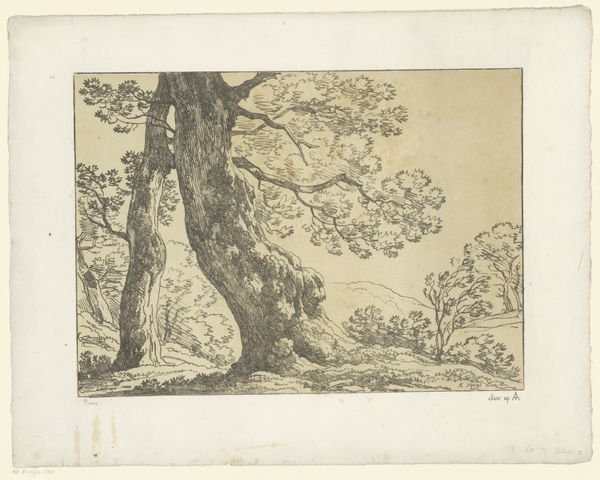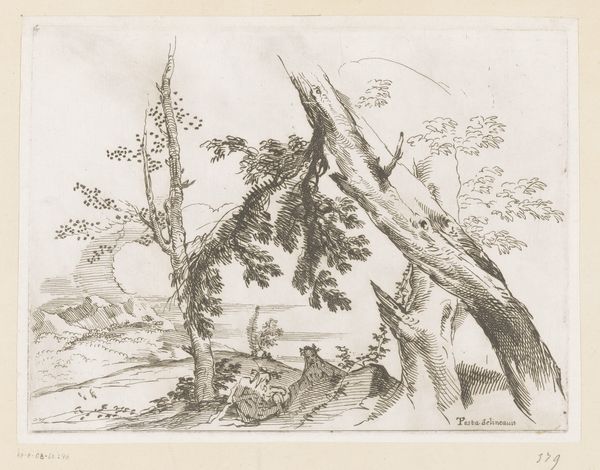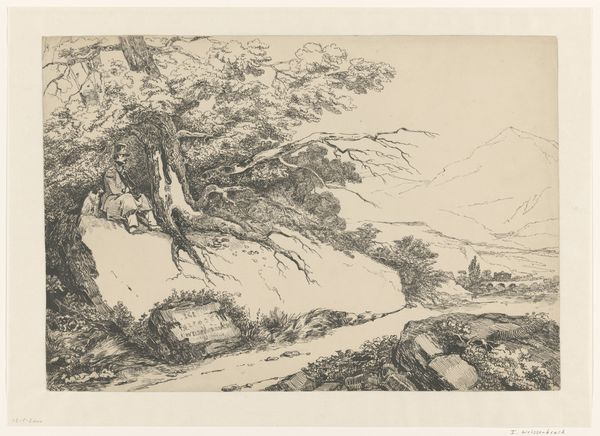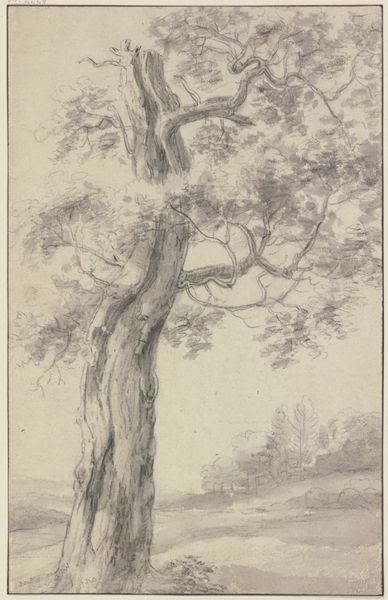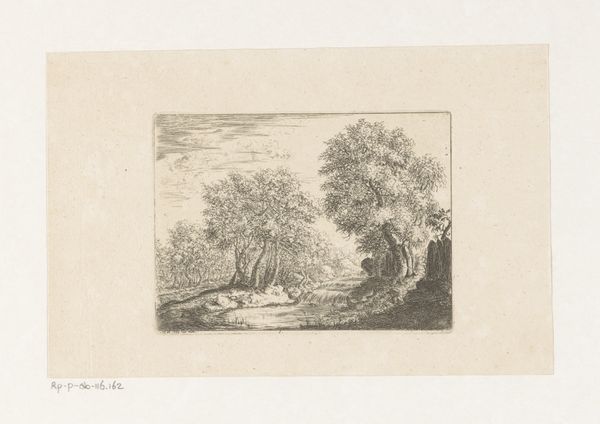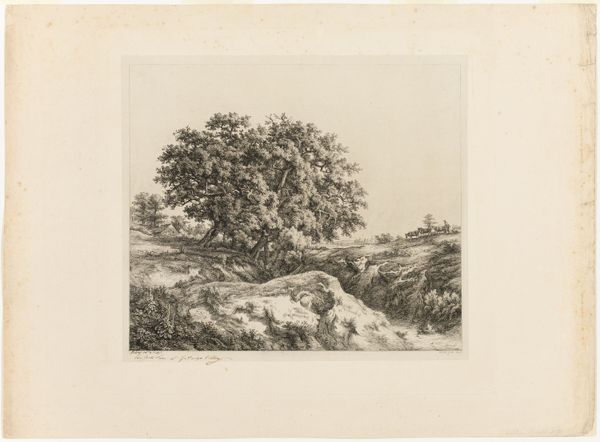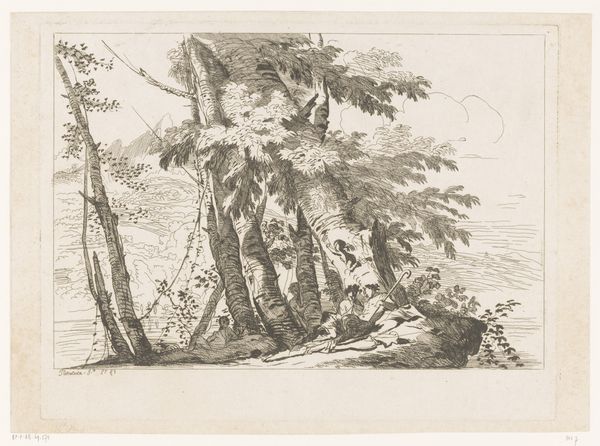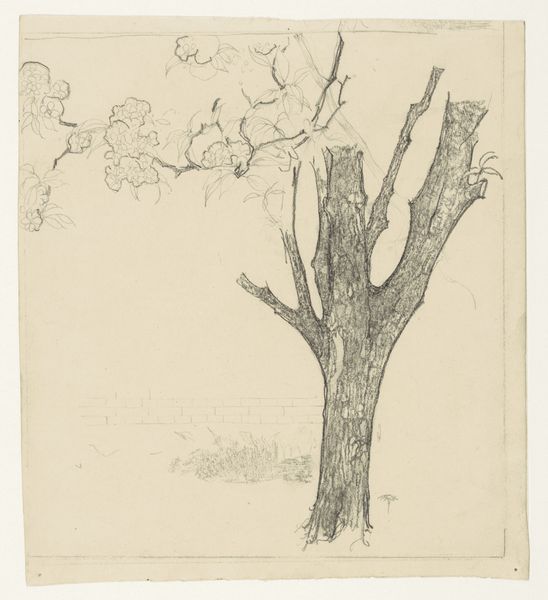
drawing, ink, pen
#
drawing
#
pen sketch
#
landscape
#
ink
#
pen
Dimensions: height 343 mm, width 514 mm
Copyright: Rijks Museum: Open Domain
Curator: Standing before us is Isaac Weissenbruch's "Vegetatie onder een boom," a pen and ink drawing from possibly the 1850s to 1858, residing here at the Rijksmuseum. Editor: My initial response is one of shadowed tranquility; a glimpse into a secret world. There is an enchanting mood about it, achieved primarily by the contrast between the dense vegetation and the open spaces around the foliage. Curator: It's interesting to note Weissenbruch's context here. He was working amidst a period of great social and political upheaval in the Netherlands and beyond. How might this affect his artistic expression in something seemingly apolitical like landscape? Editor: Well, landscape in this case feels less a celebration of nature and more a space for inward retreat. We often find trees as symbols of life, endurance, and interconnectedness. They provide shelter, and the darker rendering could underscore that role as providing covert protection during tumultuous times. Curator: Absolutely. The deliberate use of shadow feels quite intentional, highlighting a certain awareness. Was Weissenbruch attempting to express something about his lived reality within the symbolic structure of this humble sketch? Editor: The tree as a universal symbol appears throughout history, bearing different cultural weight. I see here, perhaps a resonance with pre-Christian reverence for trees, not as mere objects but living beings with a spirit of their own. We often use tree imagery to symbolize the interconnectedness of the physical and spiritual. Curator: The texture in the pen work reminds me a bit of earlier Romantic landscape, where the wildness of nature became a projection screen for societal anxieties, like gendered fears about wilderness, women, and social unrest. How might it mirror fears about industrialization and urbanization during Weissenbruch’s era? Editor: Consider also the compositional choices; it is as if the drawing only allows us to glimpse at this little part of a larger world. Does this choice suggest that peace is found in the most intimate encounters with nature, shielded from the bigger transformations around it? Curator: So it's a personal, intimate reflection, rather than a grand narrative. Perhaps that’s its political power: not to offer a broad statement, but to hold space for the individual experiencing that era of social shift and anxiety. Editor: Indeed. It's an invitation to slow down, find our place under the trees, and discover peace where we can, echoing timeless symbolism in a rapidly changing world.
Comments
No comments
Be the first to comment and join the conversation on the ultimate creative platform.
